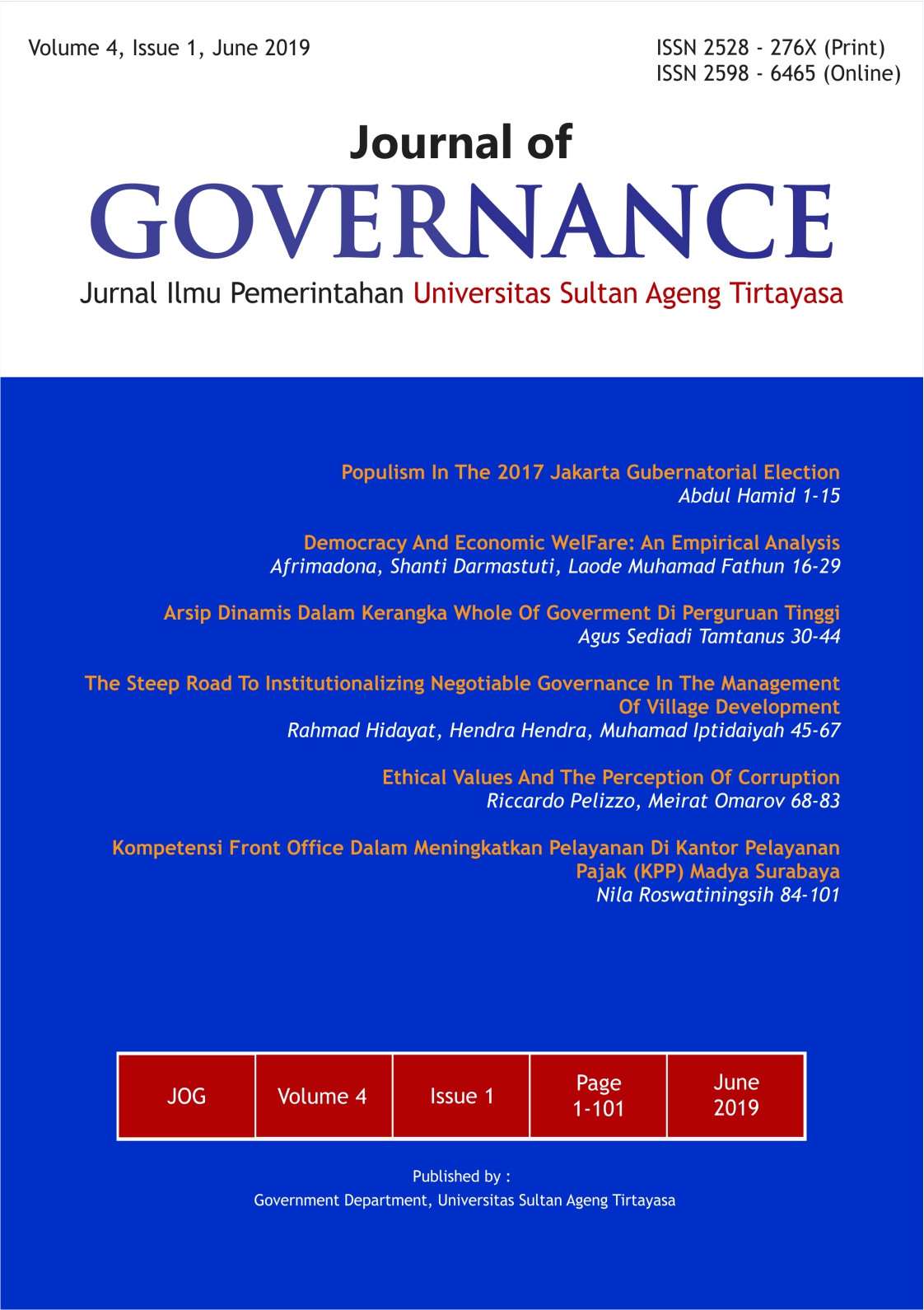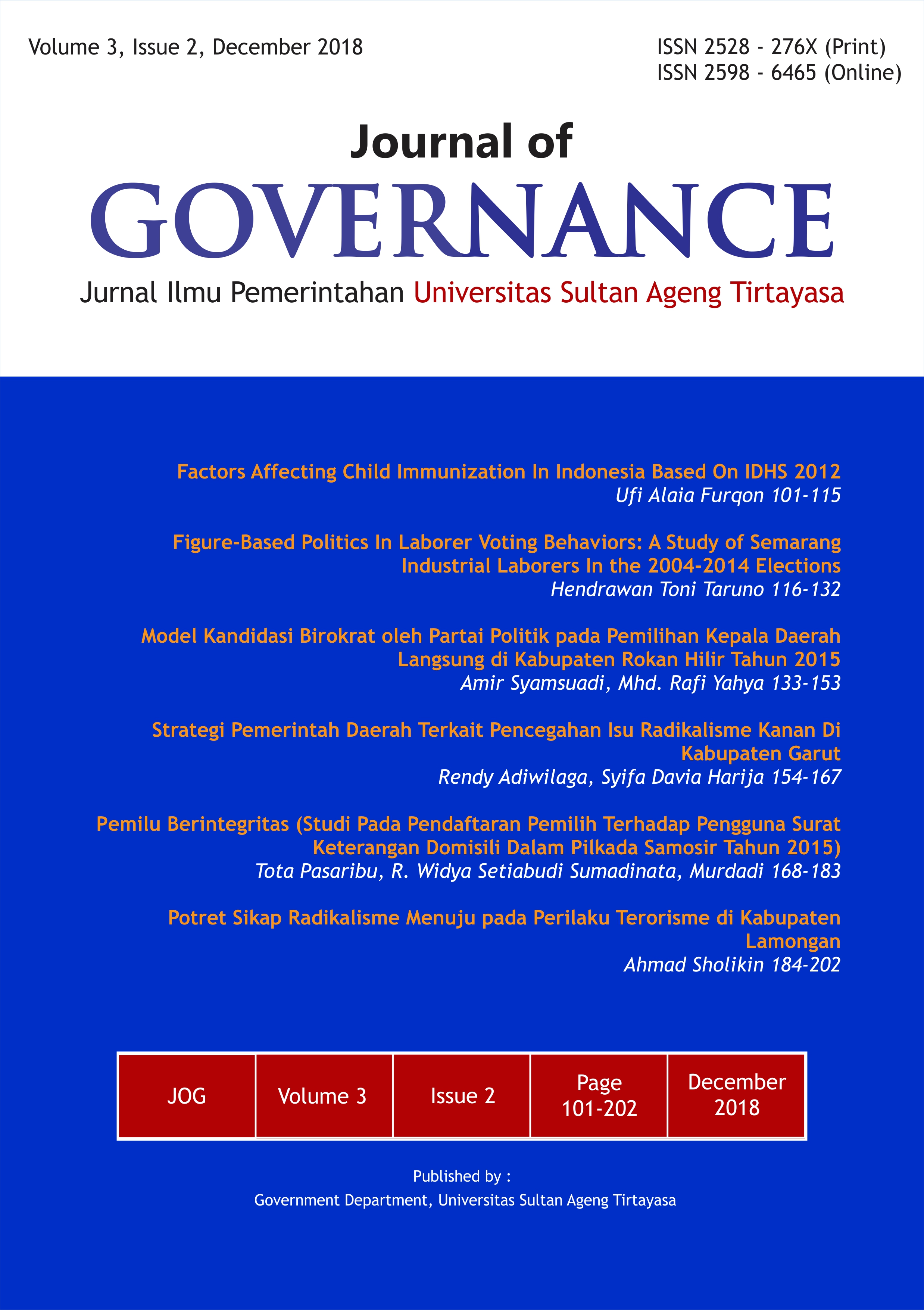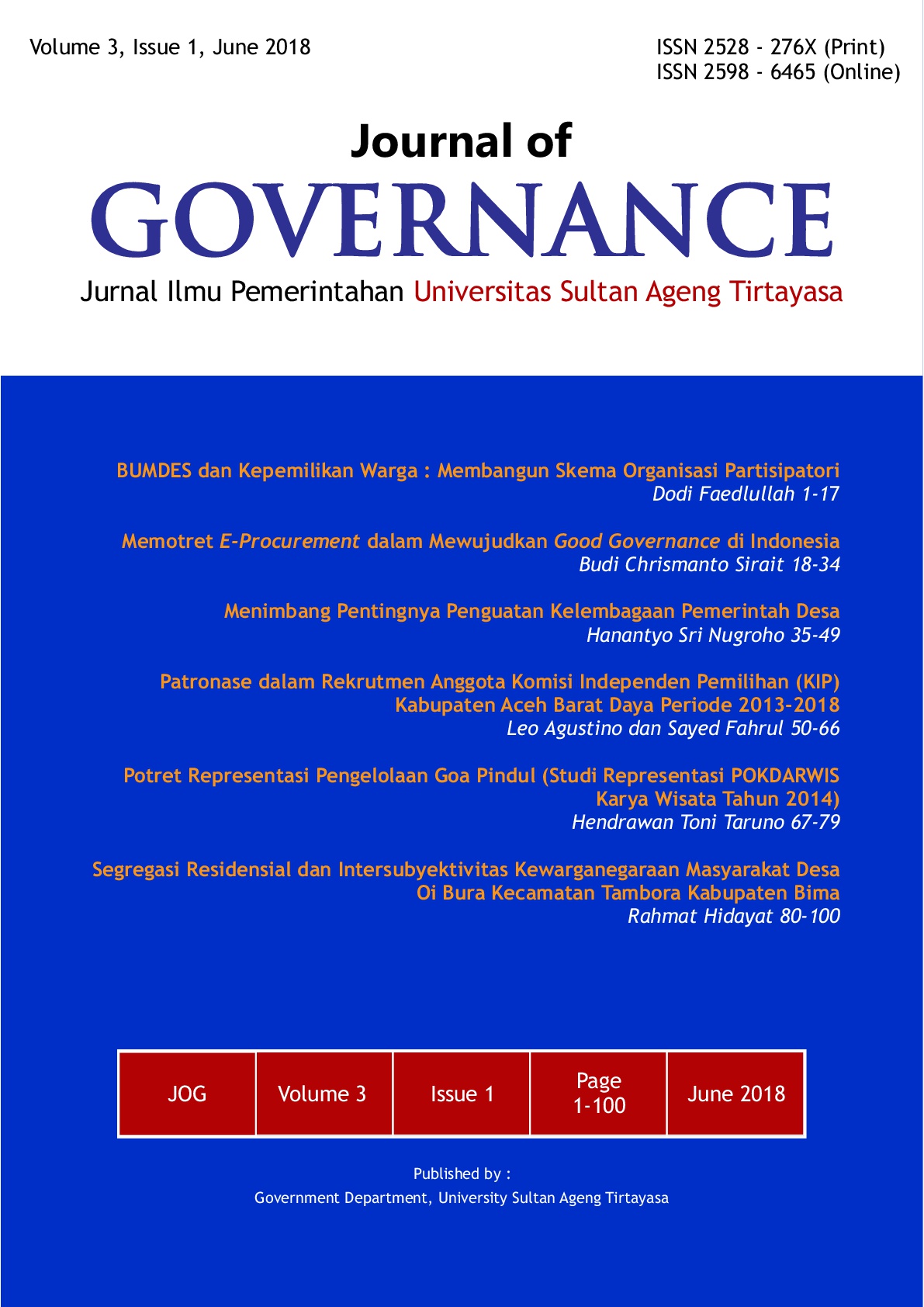From Liberal Peace to Mutual Coexistence: China’s Approach to Global Conflict Resolution
Abstract
China's emergence as a global power has sparked debates about its role in the structure of world peace. This research addresses the binary construction of China as either a challenger or supporter of liberal peace, focusing on the type and extent of its challenges. Using a qualitative methodology and case studies, this study provides insights into China's participation in the normative context of liberal peace and its efforts to transform existing peace components. The research explores China's alternative approach to peacebuilding, grounded in the Five Principles of Peaceful Coexistence, and its implications for the global order. Key findings highlight China's growing involvement in United Nations Peacekeeping Operations, its mediation efforts in conflicts like the Saudi Arabia-Iran dispute, and the use of economic cooperation as a peacebuilding tool, demonstrating a significant departure from the liberal peace paradigm.
Keywords
Full Text:
PDF 330-348References
Adhikari, M. (2021). Peacebuilding with “Chinese Characteristics”? Insights from China’s Engagement in Myanmar’s Peace Process. International Studies Review, 23(4), 1699–1726. https://doi.org/10.1093/isr/viab039
Arrey, L. E. (2023, May 28). China’s Push for Normative Change in UN Peacekeeping. Institute for Security & Development Policy. https://www.isdp.eu/un-peacekeeping-china-pushing-for-normative-changes/
Avi-Guy, O. (2021). Transformation – Overcoming the Limits of Liberal Peace and Transitional Justice in Deeply Divided Societies: Reconciliation in Liberal Peace Theory. Israel Law Review, 54(3), 289–304. https://doi.org/10.1017/S0021223721000169
Braun, V., & Clarke, V. (2006). Using thematic analysis in psychology. Taylor and Francis, 3(2), 77–101. https://doi.org/10.1191/1478088706qp063oa
Burton, G. (2023, March 15). What the Iran-Saudi Agreement Reveals About China’s Approach to Conflict Management. The Diplomat. https://thediplomat.com/2023/03/what-the-iran-saudi-agreement-reveals-about-chinas-approach-to-conflict-management/
Chaziza, M. (2023, June 4). A Decade of China’s Belt and Road Initiative in the Middle East. The National Interest. https://nationalinterest.org/feature/decade-china%E2%80%99s-belt-and-road-initiative-middle-east-206525
Chen, J., Yang, X., Wang, M., & Su, M. (2023). Evolution of China’s interaction with Middle Eastern countries under the Belt and Road Initiative. PLoS ONE, 18(11 November). https://doi.org/10.1371/journal.pone.0293426
Dorsey, J. M. (2017). China and the Middle East: Venturing into the Maelstrom. Asian Journal of Middle Eastern and Islamic Studies, 11(1), 1–14. https://doi.org/10.1080/25765949.2017.12023322
Dyachkov, I. V. (2018). Un Sanctions Against The DPRK: An Assesment Of Efficiency. Tambov University Review. Series: Humanities, 177, 173–179. https://doi.org/10.20310/1810-0201-2018-23-177-173-179
Gadzo, M. (2023). ‘Changing global order’: China’s hand in the Iran-Saudi deal. Aljazeera.Com. https://www.aljazeera.com/news/2023/3/11/changing-global-order-china-restores-ties-with-iran-and-saudi
Garlick, J., & Havlová, R. (2020). China’s “Belt and Road” Economic Diplomacy in the Persian Gulf: Strategic Hedging amidst Saudi–Iranian Regional Rivalry. Journal of Current Chinese Affairs, 49(1), 82–105. https://doi.org/10.1177/1868102619898706
gill, bates, & huang, chin-hao. (2009). CHINA’S EXPANDING PEACEKEEPING ROLE: ITS SIGNIFICANCE AND THE POLICY IMPLICATIONS SIPRI Policy Brief. http://www.un.
Godement, F. (2023, July 20). China’s Diplomatic Coup in the Middle East: The Facts Behind the Hype. The Diplomat. https://thediplomat.com/2023/07/chinas-diplomatic-coup-in-the-middle-east-the-facts-behind-the-hype/
Haiyun, M. (2023, April 14). China’s Saudi-Iran deal only a defensive response to Western security challenges. Think China. https://www.thinkchina.sg/politics/chinas-saudi-iran-deal-only-defensive-response-western-security-challenges
How, J. Z. (2023). Public relations, persona-building, and national identity construction in China. In Public relations, persona-building, and national identity construction in China (1st ed., pp. 56–71). https://doi.org/10.4324/9781003399124-5
Jiali, M. A., & Thakur, R. (2004). BASIC NORMS OF CONTEMPORARY INTERNATIONAL RELATIONS. World Affairs: The Journal of International Issues, 8(4), 30–34. https://www.jstor.org/stable/48504903
Khan, M. K., Sandano, I. A., Pratt, C. B., & Farid, T. (2018). China’s Belt and Road Initiative: A global model for an evolving approach to sustainable regional development. Sustainability (Switzerland), 10(11). https://doi.org/10.3390/su10114234
Kuo, S. C. Y. (2015). Chinese Peace? An Emergent Norm in African Peace Operations. China Quarterly of International Strategic Studies, 01(01), 155–181. https://doi.org/10.1142/S2377740015500086
Kuo, S. C. Y. (2020, January 27). China’s approach to peace in Africa is different. How and why. The Diplomat.
Legarda, H. (2018, August 22). China as a conflict mediator: maintaining stability along the Belt and Road. International Institute for Strategic Studies.
Lei, Z. (2011). Two Pillars of China’s Global Peace Engagement Strategy: UN Peacekeeping and International Peacebuilding. International Peacekeeping, 18(3), 344–362. https://doi.org/10.1080/13533312.2011.563107
Lyall, N., Al-Barasneh, A., & Abu Dalbouh, W. (2023). China’s changing engagement in global peace building and conflict resolution: drivers and trends. Jordanian Journal of Law and Political Science, 14(4). https://doi.org/10.35682/jjlps.v14i4.352
Marks, J. (2024, May 10). China’s Strategic Facilitation in the Persian Gulf Security Crisis. Stimson. https://www.stimson.org/2024/chinas-strategic-facilitation-in-the-persian-gulf-security-crisis/
Menegazzi, S. (2012). China Reinterprets the Liberal Peace. http://www.guardian.co.uk/commentisfree/2012/sep/28/bo-xilai-trial-not-without-risks.
Miklian, J. (2014). The Past, Present and Future of the ‘Liberal Peace.’ Strategic Analysis, 38(4), 493–507. https://doi.org/10.1080/09700161.2014.918426
Ministry of Foreign Affairs of the People’s Republic of China. (2014, July). The Five Principles of Peaceful Co-Existence Stand Stronger. Ir.China-Embassy.Gov.Cn. http://ir.china-embassy.gov.cn/eng/dtxw/201407/t20140702_1894012.htm
Popovic, S., & Stevic, L. (2021). Going Blue From Red – Chinese Engagement In The UN Peacekeeping Operations. Politička Revija, 69(3/2021), 173–195. https://doi.org/10.22182/pr.6932021.8
Qayum, H., Jalal, S. U., & Ishfaq, U. (2018). CHINAS GROWING STRATEGIC INTERESTS IN AFGHANISTAN. Global Political Review, 3(1), 94–100. https://doi.org/10.31703/gpr.2018(iii-i).10
Rad, A. M. (2023, August 3). Towards Iranian-Saudi Détente: China as a Mediator in the Middle East? London School of Economics and Political Science. https://blogs.lse.ac.uk/cff/2023/08/03/towards-iranian-saudi-detente-china-as-a-mediator-in-the-middle-east/
Shokri, U. (2023, June 23). Obstacles and opportunities for closer Iranian-Chinese economic cooperation. Middle East Institute. https://www.mei.edu/publications/obstacles-and-opportunities-closer-iranian-chinese-economic-cooperation
Smith, G., & Paola, A. Di. (2024, June 16). Iranian Oil Is Quietly Flooding Into the Global Market Again. Boomberg. https://www.bloomberg.com/news/articles/2023-06-16/iranian-oil-is-quietly-flooding-into-the-global-market-again
Stimson. (2023, March 13). The Story Behind China’s Role in the Iran-Saudi Deal. Stimson.Org. https://www.stimson.org/2023/the-story-behind-chinas-role-in-the-iran-saudi-deal/
The State Council Information Office The Peoples Republic of China. (2020). China’s Armed Forces: 30 Years of UN Peacekeeping Operations. http://english.scio.gov.cn/whitepapers/2020-09/18/content_76716768_9.htm
Theory China. (2021, April 26). The Five Principles of Peaceful Coexistence. Theory China. https://en.theorychina.org.cn/c/2021-04-26/1387734.shtmla
United Nation Peace Keeping. (2024). How We are Funded? Peacekeeping.Un.Org. https://peacekeeping.un.org/en/how-we-are-funded
Utama, V. R. (2024, June 13). Membaca Strategi China di Timur Tengah. Detik.Com. https://news.detik.com/kolom/d-7387424/membaca-strategi-china-di-timur-tengah
Visoka, G., & Richmond, O. (2016). After Liberal Peace? From Failed State-Building to an Emancipatory Peace in Kosovo. International Studies Perspectives, ekw006. https://doi.org/10.1093/isp/ekw006
Voa News. (2023, March 10). White House Welcomes Chinese-Brokered Saudi-Iran Deal. Voanews.Com. https://voanews.com/a/white-house-welcomes-chinese-brokered-saudi-iran-deal/6999700.html
Wong, K. C. (2021). The Rise of China’s Developmental Peace: Can an Economic Approach to Peacebuilding Create Sustainable Peace? Global Society, 35(4), 522–540. https://doi.org/10.1080/13600826.2021.1942802
Wun-kong, L., & Wong, K. T. (2024, June 10). Stronger China-Saudi Arabia Ties Benefit the Entire Middle East. China Daily. https://www.chinadailyhk.com/hk/article/585308
Xinhua. (2020, September 12). China’s Armed Forces: 30 Years of UN Peacekeeping Operations. Xinhua.Net. China’s Armed Forces: 30 Years of UN Peacekeeping Operations
Yazdani, E. (2023). Journal of Humanities and Social Sciences Studies Iran’s Relations with China under the Influence of Two Regional Events. https://doi.org/10.32996/jhsss
Yin, R. K. (2018). Case Study Research Design and Methods (5th ed.). Sage Publications.
Yuan, X. (2020). Chinese pathways to peacebuilding: from historical legacies to contemporary practices. Pathways to Peace and Security, 1, 26–45. https://doi.org/10.20542/2307-1494-2020-1-26-45
Zavareh, M. S., & Fallahi Barzoki, M. (2018). China’s Energy Security: I.R. Iran and Saudi Arabia’s Role in China’s Energy Diplomacy. In Econ. Rev (Vol. 22, Issue 3).
Zhang, Y. (2022). China’s rise and peace building in Asia. Journal of Chinese Economic and Business Studies, 20(3), 275–285. https://doi.org/10.1080/14765284.2022.2046439
DOI: http://dx.doi.org/10.62870/jog.v10i2.27627
Refbacks
- There are currently no refbacks.
⟨Recent Issues⟩ | ⟨Upcoming Issues⟩ |
Recent Issues
Volume 6, Issue 2: (2021) | Volume 6, Issue 1: (2021) | Volume 5, Issue 2: (2020) | Volume 5, Issue 1: (2020) | Volume 4, Issue 2 (2019) |
 |  |  |  |  |






